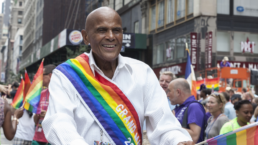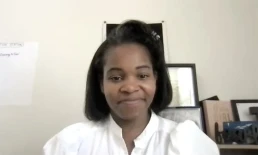This epochal artist helped us see that justice for all requires a just distribution of wealth.
By Sam Pizzigati, Inequality.org
Those of us just eight years old back in 1956 didn’t know the amazing stats of Harry Belafonte’s sudden and smashing musical success. We didn’t know, for instance, that his record album entitled Calypso had become the first album by a single artist ever to sell over a million copies. But we did know Harry Belafonte. His music and voice seemed to be coming at us from everywhere.

“Day-o!” we kids would warble. “Daylight come and we want go home.”
Belafonte, unlike other stars of that era, never did “go home” and fade away. On Tuesday, right after his death, almost every major U.S. media outlet immediately began running glowing appreciations of his long and remarkable career. The obituaries all saluted his artistry and his commitment to social justice.
From the late 1950s onward, as the New York Times obit would note, Belafonte would be far more than a superstar. Year after year, he put “his primary focus” on “civil rights,” the “quest for racial equality,” doing everything from bailing out jailed activists to helping organize the landmark 1963 March on Washington.
But both Belafonte and his close friend Martin Luther King Jr saw their civil rights advocacy as the cutting edge of a still broader struggle for equality. At one activist gathering in Belafonte’s New York apartment, his memoir My Song would later relate, the assembled activists heard Dr. King give that broader struggle an evocative frame.
“I’ve come to believe,” the Rev. Dr. King told the group, “that we are integrating into a burning house.”
Recent Posts
These Veterans Starved Themselves To Protest The War In Gaza
July 8, 2025
Take Action Now As food in Gaza becomes increasingly scarce, activists are pushing their bodies to the limit in solidarity.By Emmet Fraizer, The…
ICE Agents Are Terrorizing Los Angeles With Brutal Tactics
July 8, 2025
Take Action Now ICE agents have established a pattern of brutal use of force in immigration raids.By Jonah Valdez, The InterceptSince June 6,…
Talk World Radio: India Walton On Zohran Mamdani And Freezing Out ICE
July 7, 2025
Take Action Now India Walton, former Democrat nominee for mayor of Buffalo, NY, discusses Zohran Mamdani and the race for NYC mayor and how to deal…
How Climate Change Is Worsening Flooding And Heavy Rainfall
July 7, 2025
Take Action Now The latest science on the link between climate change and natural disasters — and how they may be playing out where you live.By…




